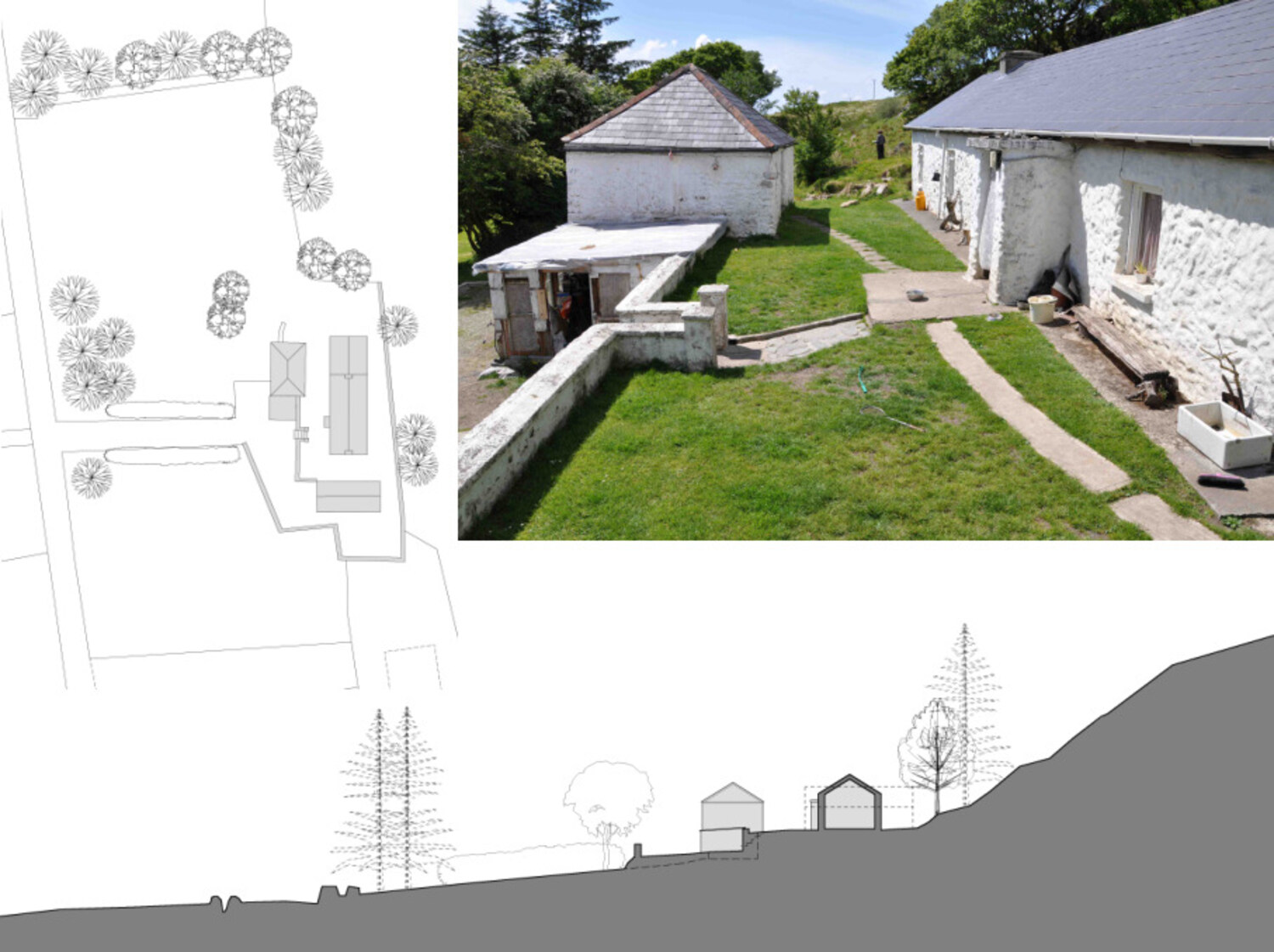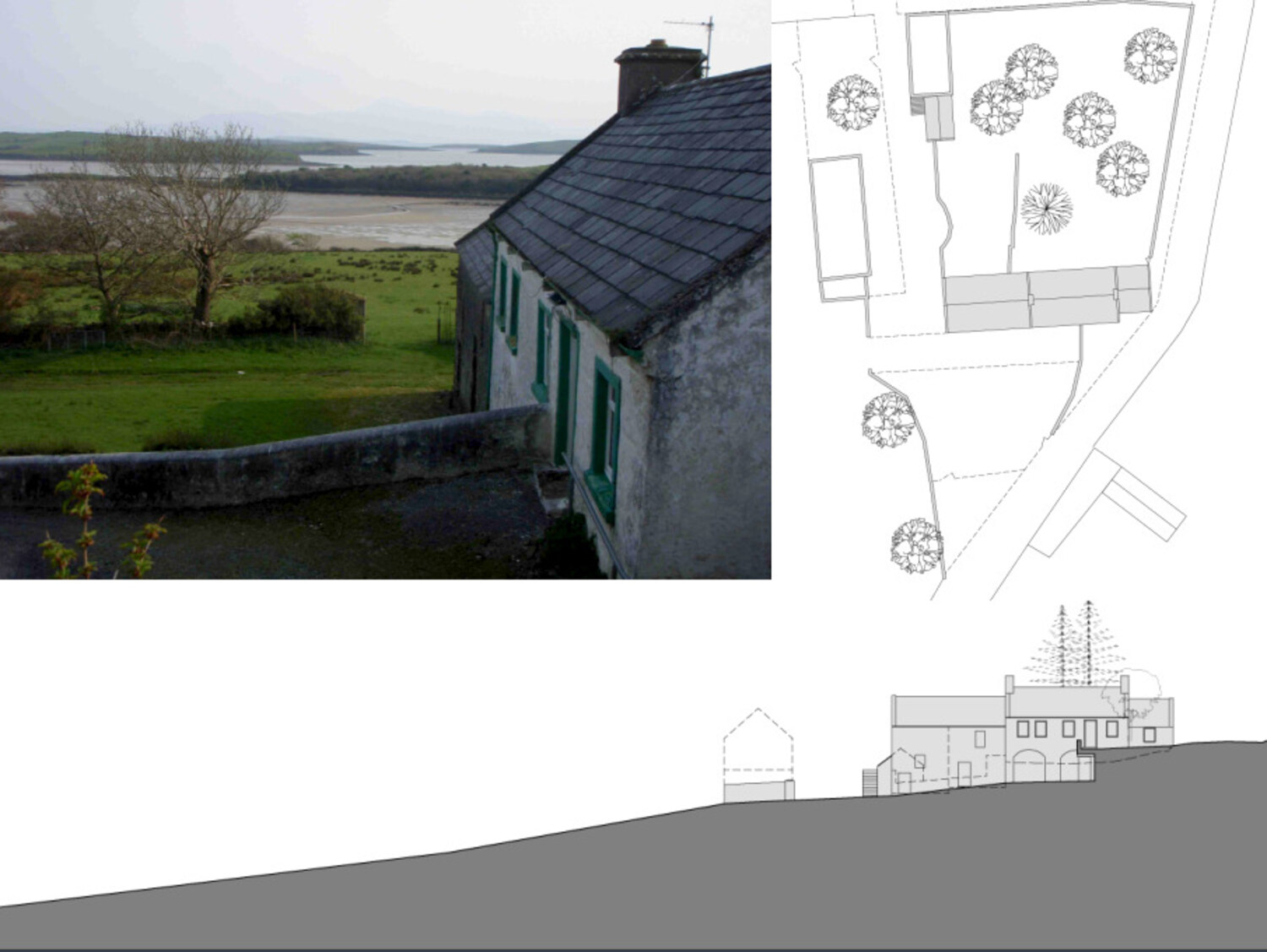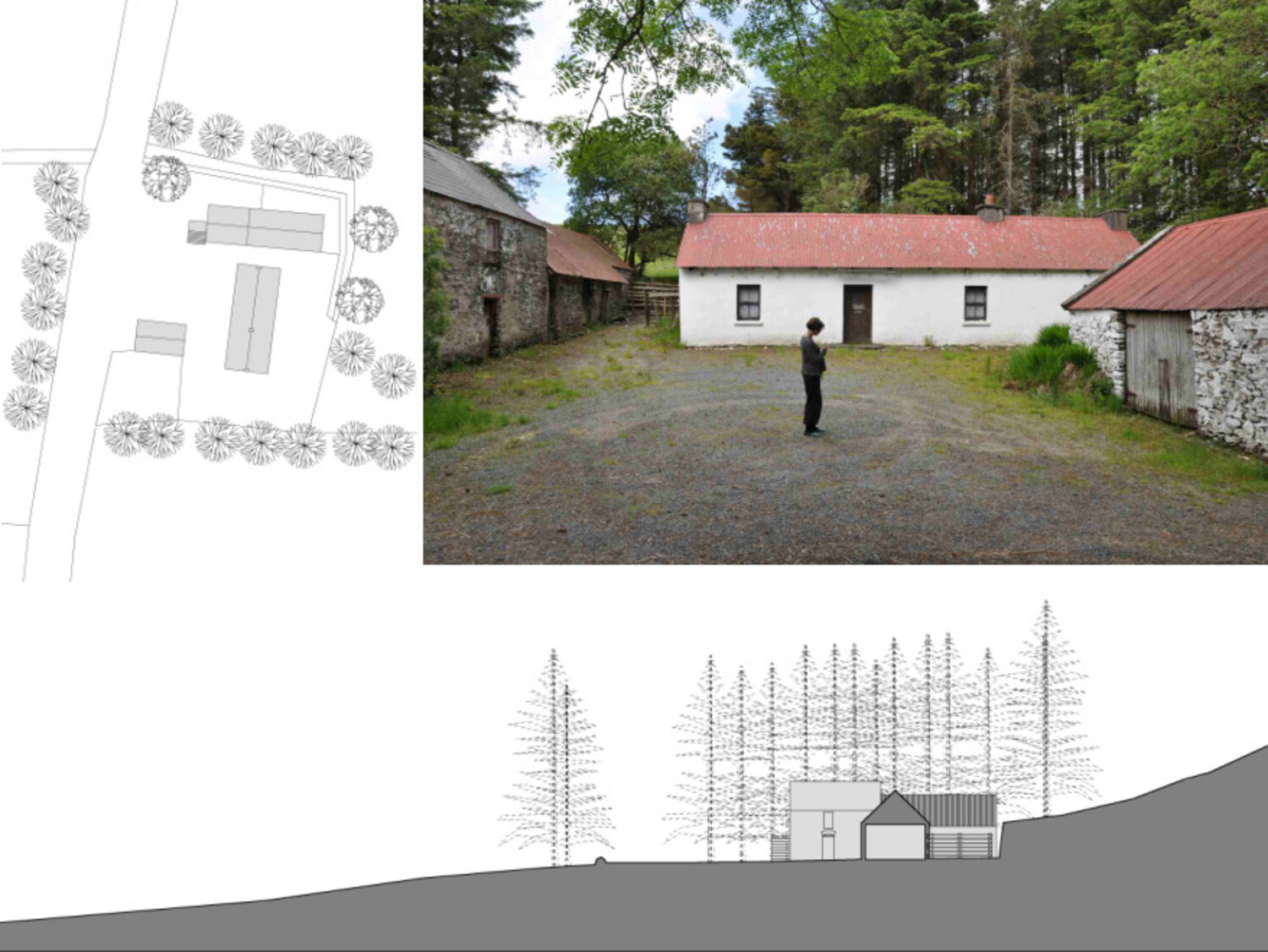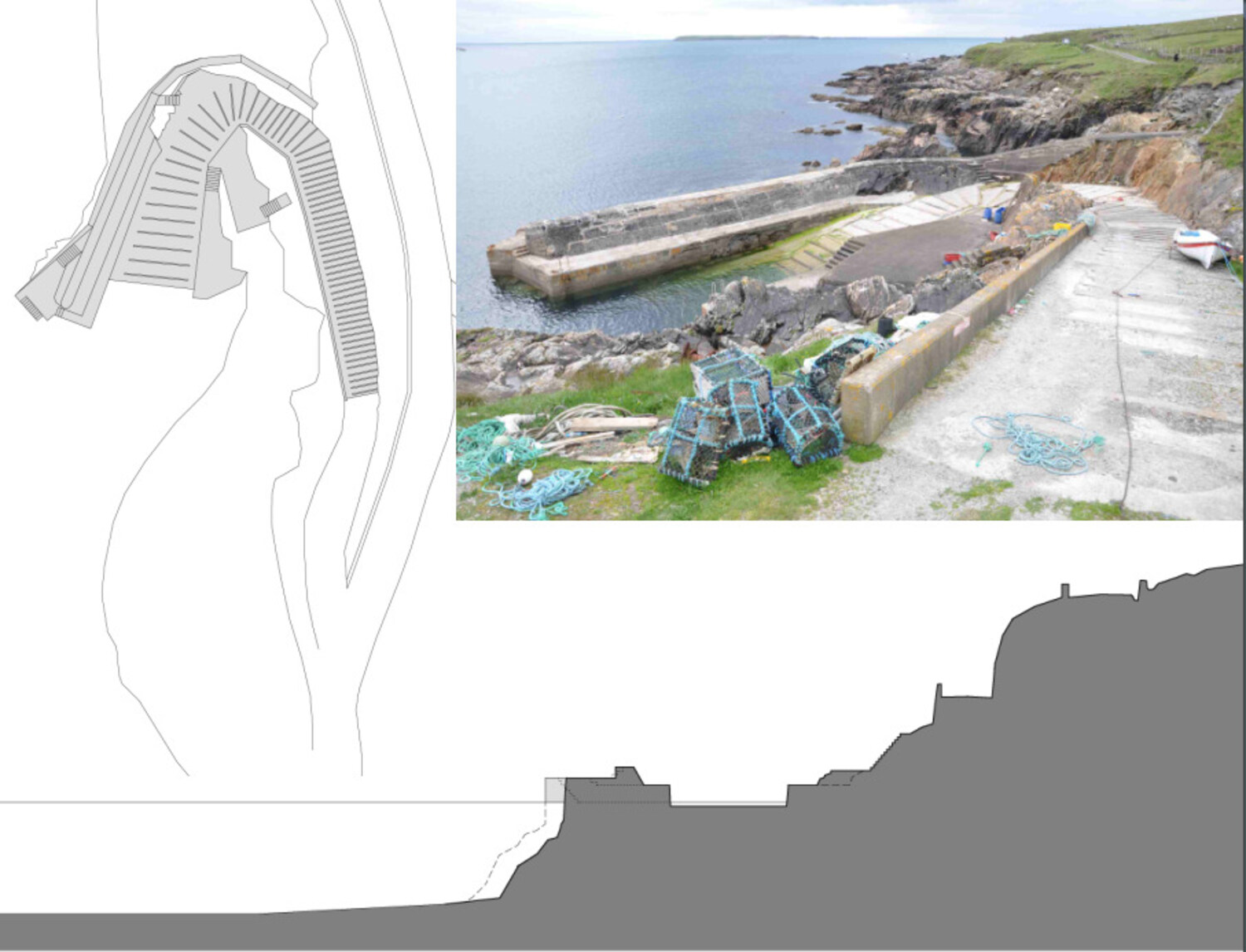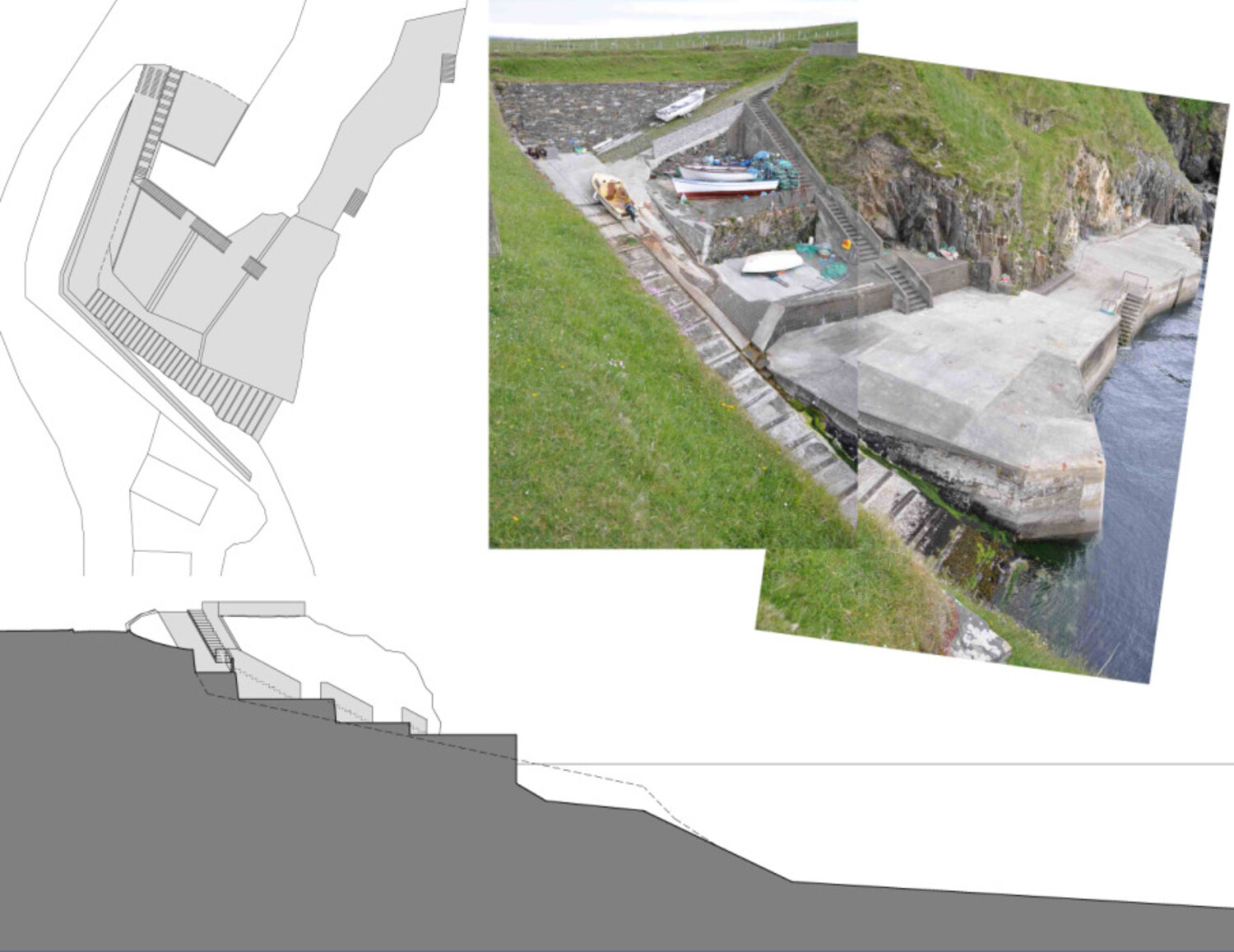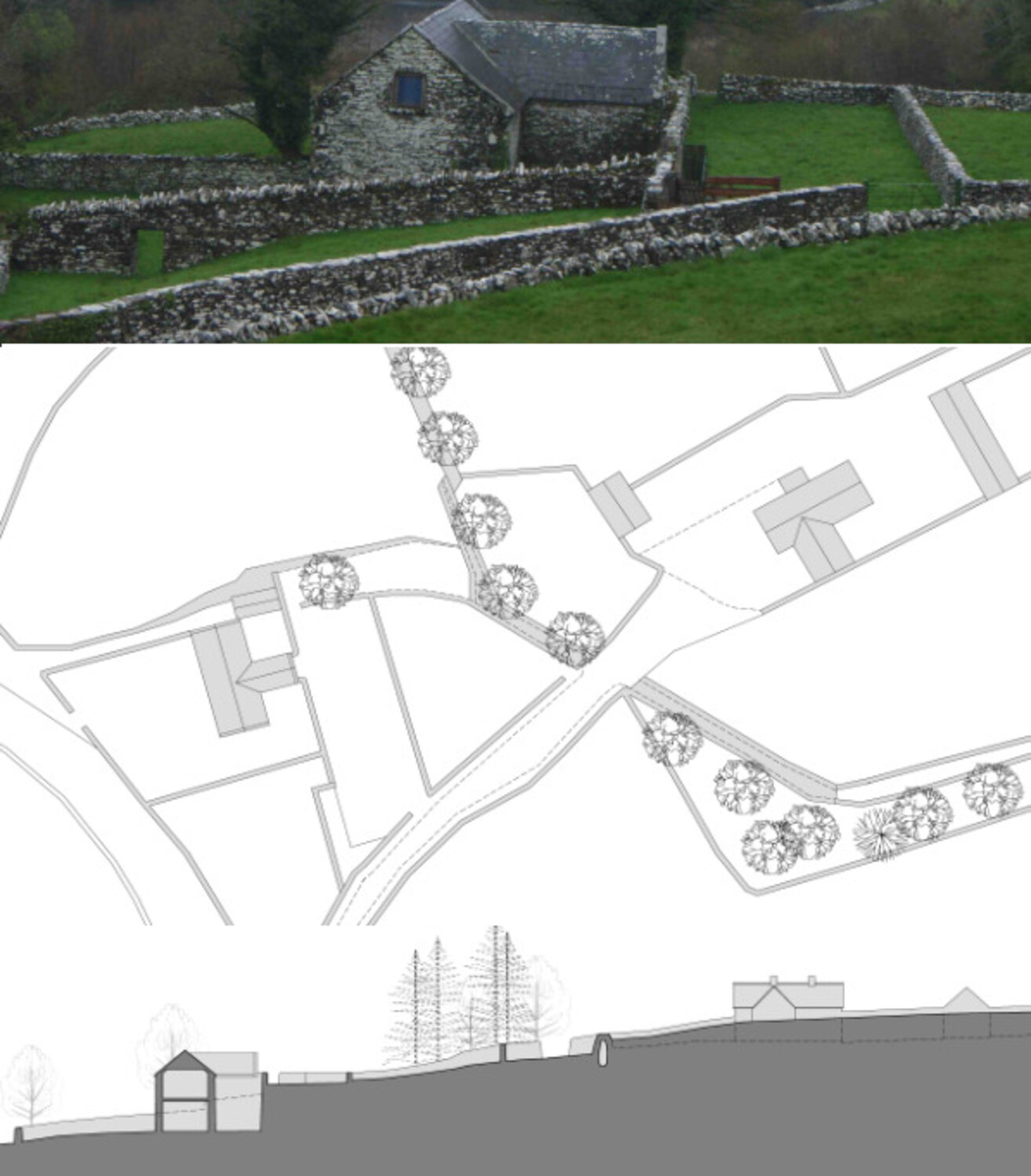Utility And Landscape
Utility and Landscape
A Case Study Of Irish Vernacular Architecture
This research investigates the utilitarian or everyday relationships to landscape evident in the interlocking of land use practices, spatial strategies, and built structures in the context of rural Ireland. Primary research in the form of spatial documentation of landscape strategies deployed in farm buildings, marine structures, mill buildings, and lime kilns were analyzed, revealing landscape’s role as an instrumental element in these configurations, not merely a setting. The research refers to prevailing/ traditional discourse on vernacular architecture and the limitations of typological classifications. A performative reading of these structures and configurations presents a counterpoint to this discourse, and informs a re-articulation of their aesthetic/ethical interpretation. This approach parallels shifts in current scholarship in the field advocating a re-interpretation based on the heterogeneity and adaptability of much of what is categorized as vernacular.
A more profound understanding of the pragmatic spatial thinking and utilitarian relationship to landscape behind much of what is termed ‘vernacular architecture’ has considerable potential to inform contemporary approaches to the rural landscape, ranging from specific pragmatic strategies to a broader ethos and sensibility of utility, economy and resourcefulness.
This research was published in an earlier form in the Journal of Landscape Architecture, Nov 2012
Awarded the Irish Architecture Research Award 2012

